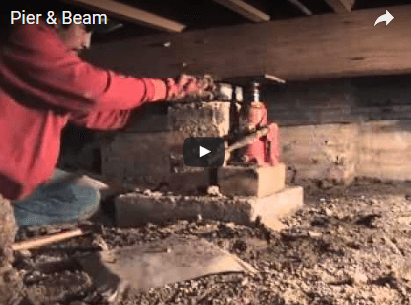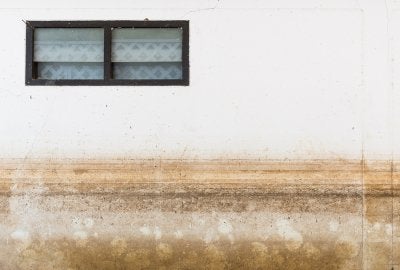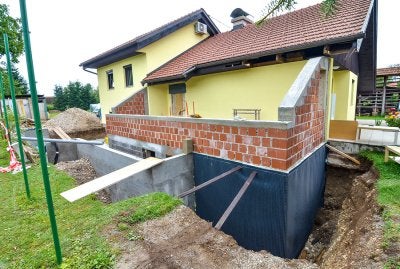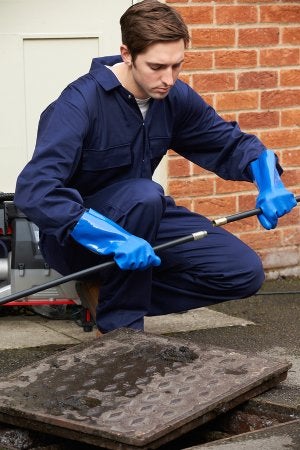-
Repairing a Pier and Beam Foundation

Different types of foundations will benefit from their own forms of foundation repair serving San Antonio. Your contractor should be able to make the necessary repairs, but the actual process will vary depending on the type of foundation in question. Take a look at this video clip for a quick overview of repairing a pier and beam foundation.
Your pier and beam foundation keeps your home level and prevents walls, floors, doors, and windows from sustaining damage due to shifting soil. If your existing piers are still in decent shape, your contractor may use them to adjust the level of the home. While the foreman checks door openings and measures the level, jacks will be placed at certain lift points. If it turns out that the existing piers don’t provide the right amount of support, your contractor might dig a new footing and fill it with strong concrete.
-
The Signs of a Slab Leak
A slab leak is a serious situation for any homeowner. Slab leaks are defined as any plumbing leaks that occur underneath the foundation slab of your property. When your plumbing develops a slab leak, you may need to set up foundation repair and waterproofing services for your home. To determine when it is time to call in the experts, it is important to be on the lookout for the signs and symptoms of a slab leak. For example, when your home has a slab leak, you may notice the sound of running water in your home, even when all of your water is turned off. Additionally, you may also find unusual cracks or hot spots along your floors. Fortunately, a contractor in San Antonio can help you diagnose and repair a slab leak on your property. From drainage correction to waterproofing and more, a foundation repair technician will be able to offer you the services that you need to completely restore the foundation of your home.

-
The Homeowner’s Guide to Lintel Repair
 Lintels are structural devices that are used to support brick, stone, or other types of masonry work. If you have noticed that the lintel areas around your garage, doors, or windows have begun to sag or break, you will want to schedule immediate repairs. A company that offers foundation repair and waterproofing near San Antonio can also provide you with concrete correction services. By trusting your lintel repair to a qualified contractor, you can feel great knowing that your home’s masonry is in great shape. Read on for quick guide on what you need to know about lintel repair.
Lintels are structural devices that are used to support brick, stone, or other types of masonry work. If you have noticed that the lintel areas around your garage, doors, or windows have begun to sag or break, you will want to schedule immediate repairs. A company that offers foundation repair and waterproofing near San Antonio can also provide you with concrete correction services. By trusting your lintel repair to a qualified contractor, you can feel great knowing that your home’s masonry is in great shape. Read on for quick guide on what you need to know about lintel repair. 
Assess the Damage
The first step of lintel repair is to take the time needed to fully assess the damage. Typically, lintel problems are caused by improper initial design. Your contractor will need to check to see where the initial problem took place, and what has caused the structural issue. This information will be invaluable when it comes time to design a new lintel support system.
Remove the Problematic Areas
After the damage has been assessed, it will be time to remove the damaged areas of the lintel. In order to keep the structural integrity of your property intact, your contractor will need to make sure that the lintel is supported by an exterior brace. With the lintel properly braced, your contractor can remove any damaged mortar, bricks, or other materials. Additionally, the damaged area can be cleaned out and prepared for the repair procedure to take place.
Replace the Damaged Lintel
Once the problematic areas have been properly removed, it will be time to replace the damaged section of lintel. In order to secure the lintel into place, your contractor will use a series of very heavy duty bolts. After the bolts have been drilled into place, the lintel will be returned to its proper positioning. To finish the job, your contractor will smooth a matching mortar product over the surface of your lintel.
-
What Are French Drains?
 Water damage is one of the most common reasons that homeowners schedule foundation repair. If water damage has affected the structural integrity of your pier and beam foundation, it may be time to hire a contractor in San Antonio to help you design an improved drainage solution for your home. A French drain installation can help water move safely and effectively away from your basement and foundation. With your French drain installation completed, you can rest assured that your foundation is protected from flooding and water damage. Read on for a look at what you need to know about French drains and your home.
Water damage is one of the most common reasons that homeowners schedule foundation repair. If water damage has affected the structural integrity of your pier and beam foundation, it may be time to hire a contractor in San Antonio to help you design an improved drainage solution for your home. A French drain installation can help water move safely and effectively away from your basement and foundation. With your French drain installation completed, you can rest assured that your foundation is protected from flooding and water damage. Read on for a look at what you need to know about French drains and your home. 
How French Drains Work
French drains rely on remarkably simple principles to eliminate water from a home’s foundation. When a French drain is installed, your contractor will create a gravel filled trench for water to flow through. During a heavy rainstorm, water will naturally collect in this trench. As the trench fills with water, gravity will naturally pull the liquid down and away from your property where it can empty at a safe location away from your house.
How to Choose a French Drain Site
In order for a French drain to work effectively, it must be placed on an effective location on your property. For example, your contractor will need to choose a low lying area for the trench to flow toward. If your property does not have the proper slope, your contractor may choose a dry well or ditch as your drainage site.
Signs You Need a French Drain
To determine whether a French drain is right for your needs, it is important to be on the lookout for the signs of basement water damage. When you find that water gets into your basement on a frequent basis, you may be in need of a French drain installation. Additionally, French drains should also be included wherever there is a retaining wall. Your contractor can help you determine whether a French drain is right for you.
RECENT POSTS
categories
- Uncategorized
- Foundation Repair San Antonio
- Cracked Foundation
- Foundation Information
- Foundation Repair
- Contractors
- Drainage Maintenance
- drainage correction professionals
- Foundation Cracks
- waterproofing services
- home foundations
- Drainage Correction services
- Sagging Lintels
- Lintel Repair
- Drooping Lintels
- [INFOGRAPHIC]
- Drain Installation
- Foundation Damage
- Poor Water Drainage
- Concrete flatwork installation
